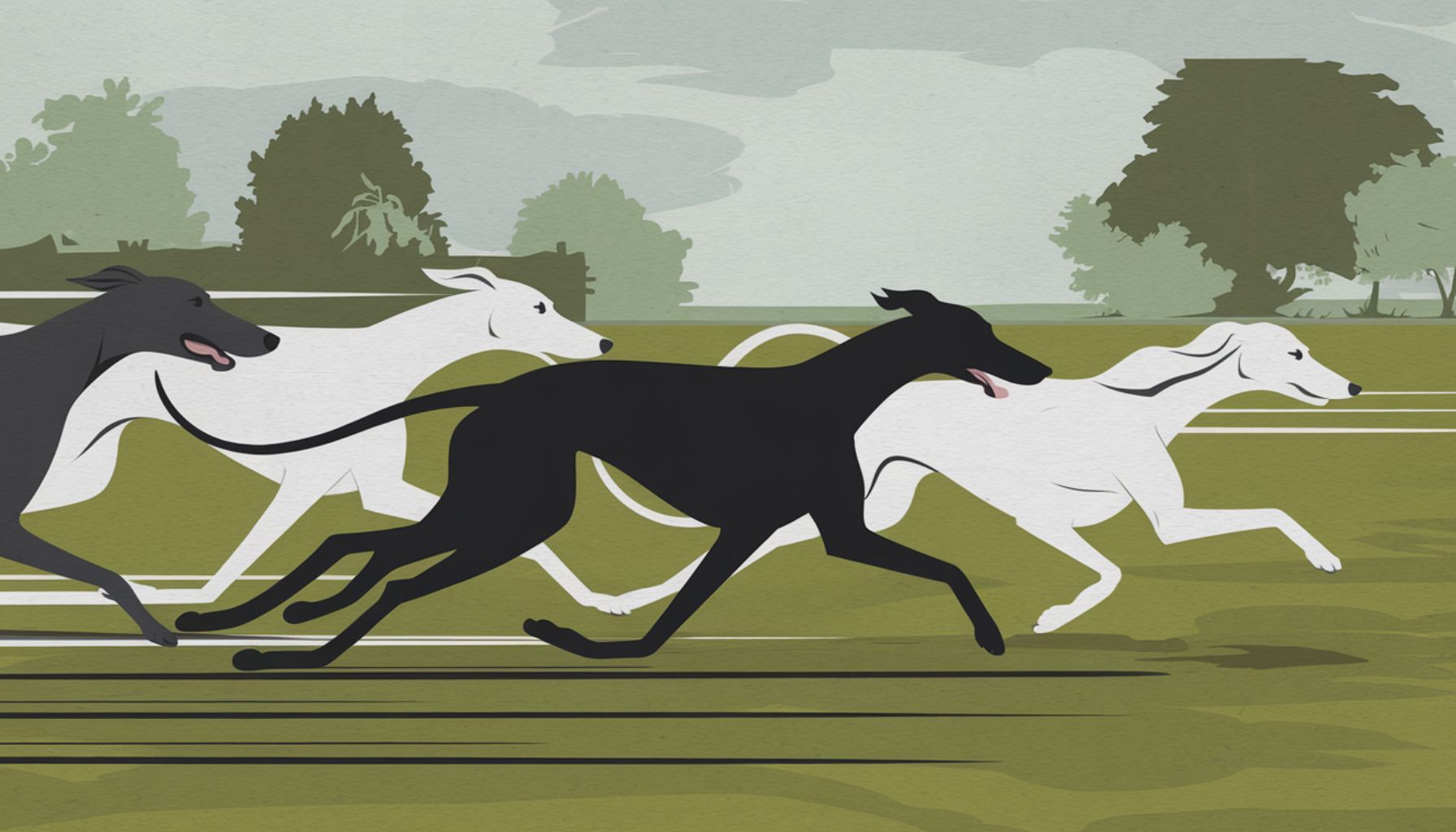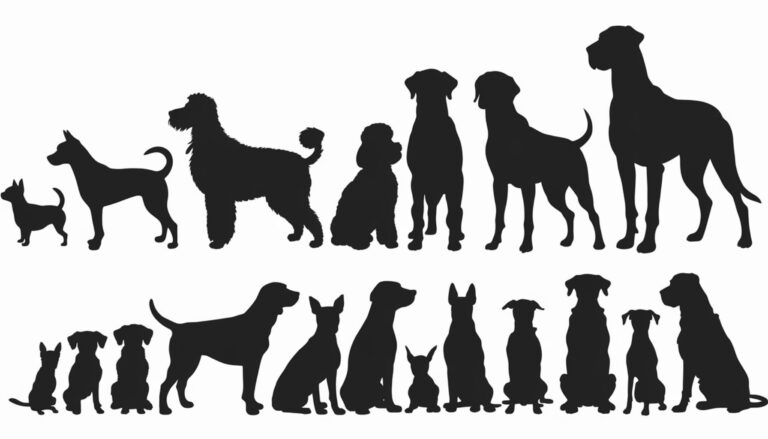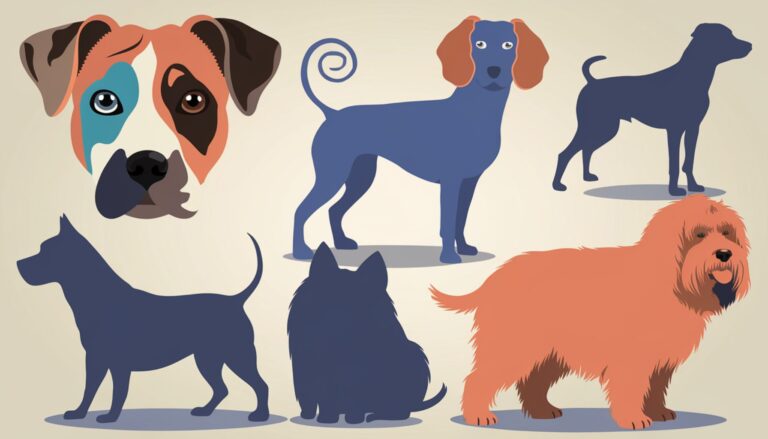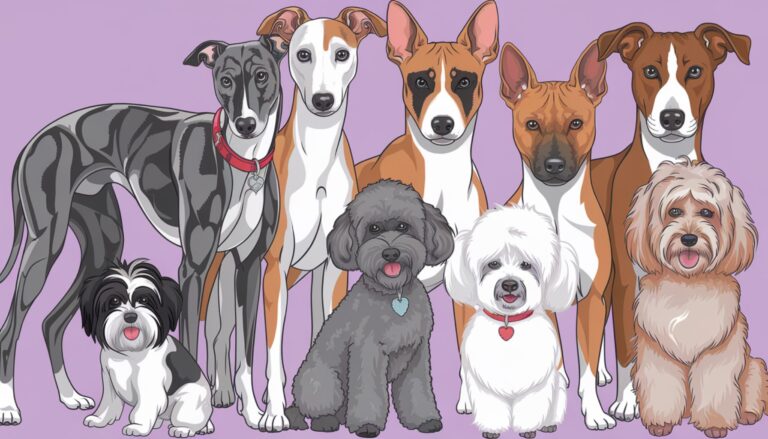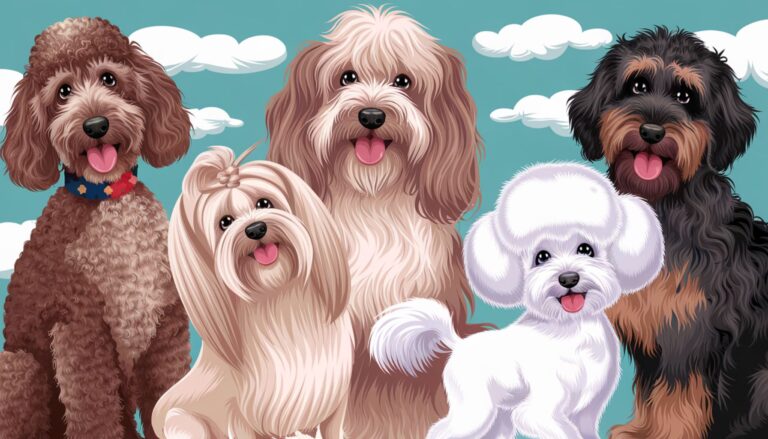Speed Demons: The 10 Fastest Dog Breeds in the World
Some of our posts on woofwagnation.com contain affiliate links. If you click on an affiliate link and make a purchase, we may receive a commission. Clicking on an affiliate link that earns a commission does NOT result in additional charges or costs you extra. Earnings from affiliate links help keep this website running. See our full affiliate disclosure here.
Ever wondered what it feels like to be outrun by a four-legged furball?
The fastest dog breeds can leave even Olympic sprinters in the dust. These canine speed demons aren’t just quick – they’re built for velocity, with bodies that seem to defy physics as they zoom across fields and tracks.
From the legendary Greyhound to some surprising entries, the world of swift dogs is fascinating and diverse.
Whether you’re a potential owner looking for an energetic companion or just curious about these canine athletes, understanding these speedy breeds offers insights into the incredible capabilities of our furry friends.
So, buckle up.
We’re about to take a whirlwind tour through the world of the fastest dogs, and trust me, you’ll want to keep your eyes peeled to catch these swift pups in action.
Key Takeaways
- Top Speed: Greyhounds reign supreme, reaching up to 45 mph
- Physical Traits: Deep chests, flexible spines, and long legs contribute to speed
- Diverse Origins: Fast breeds come from various backgrounds, including hunting and racing
- Surprising Speedsters: Some small breeds, like Jack Russell Terriers, make the list
- Modern Life: Many fast breeds adapt well to family settings when properly exercised
- Care Needs: High-energy breeds require appropriate exercise and mental stimulation
- Historical Significance: Many fast breeds have ancient origins and rich histories
- Comparisons: Some dogs can outpace horses and keep up with cheetahs (briefly)
- Acceleration: Greyhounds can reach top speed in just 6 strides
- Versatility: Fast breeds often excel in various dog sports and activities
Fastest Dog Breeds: Key Facts
Greyhound
Top speed of 45 mph (72 km/h), reaching it in just 6 strides
Saluki
Can maintain speeds of 42-43 mph for up to 800 meters
Jack Russell Terrier
Can reach speeds of up to 38 mph despite its small size
Alaskan Malamute
Can maintain 10-15 mph for hours, covering up to 100 miles a day
The Need for Speed: Why Some Dogs Are Built for Velocity
Let’s talk about why some dogs seem to have rocket boosters strapped to their paws. It’s not just about being the first to the food bowl – these speed demons are the product of thousands of years of evolution and selective breeding.
Think about it – in the wild, speed can mean the difference between catching dinner and going hungry. Many of our fastest dog breeds started as hunting companions, chasing down prey across wide-open spaces. Their bodies evolved to be perfect running machines, with every muscle and bone working together to create mind-blowing speed.
But it’s not just about having long legs (though that helps). These swift pups have a whole toolkit of physical traits that make them the Usain Bolts of the canine world:
- Aerodynamic Build: Ever notice how Greyhounds look like they’re built for a wind tunnel? That sleek body isn’t just for looks – it cuts through the air like a knife.
- Flexible Spine: A bendy backbone acts like a spring, helping these dogs stretch out for longer strides.
- Powerful Muscles: Fast-twitch muscle fibers give these pups explosive acceleration.
- Deep Chest: More room for lungs means more oxygen to fuel those sprinting muscles.
- Large Heart: A bigger ticker pumps more blood to those hard-working legs.
And let’s not forget the brain power. Many of these speedsters have an intense prey drive and laser-like focus. When they set their sights on a target, whether it’s a lure on a racetrack or a tennis ball in your backyard, they’re all in.
But here’s the kicker – not all fast dogs are created equal. Some are built for quick bursts of speed, while others can maintain a steady pace for miles. It’s like comparing a sprinter to a marathon runner – both fast, but in very different ways.
Listen To or Watch Our Podcast on Fast Dogs
Top 10 Fastest Dog Breeds
Alright, drum roll, please!
It’s time to meet our canine speed champions. These pups aren’t just fast. They’re the cream of the crop, the top dogs (pun intended) when it comes to velocity. Let’s count down the top 10 fastest dog breeds, and trust me, some of these might surprise you.
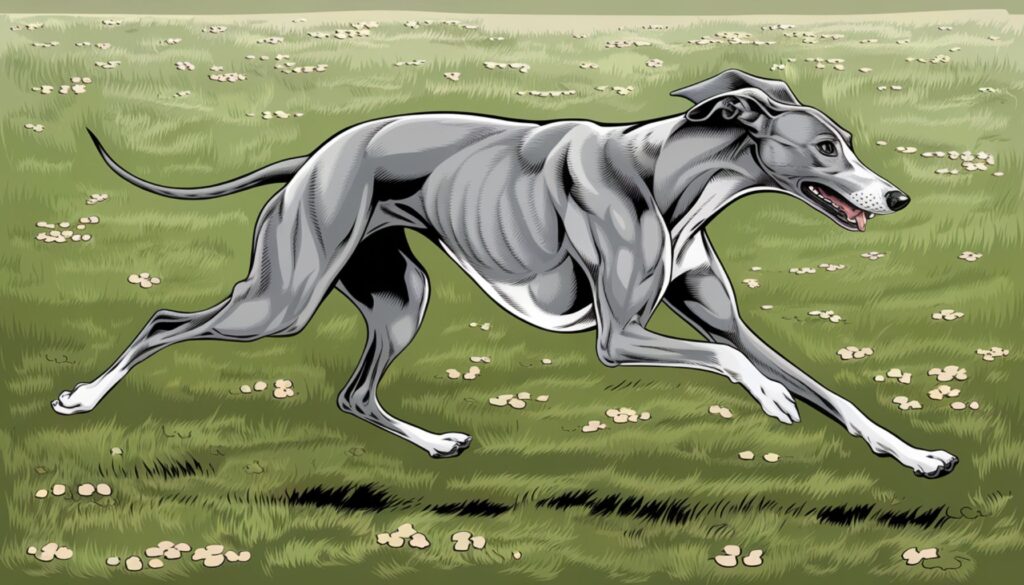
1. Greyhound
The undisputed champion of canine speed, Greyhounds can hit a top speed of 45 mph. That’s faster than the speed limit in some towns! These lanky speedsters can accelerate to top speed in just 6 strides. With their deep chest, aerodynamic build, and powerful legs, Greyhounds are basically the Ferraris of the dog world.
Fun fact: A Greyhound could beat Usain Bolt in a 100-meter dash. While Bolt’s record stands at 9.58 seconds, a Greyhound could cross the finish line in about 5.33 seconds.
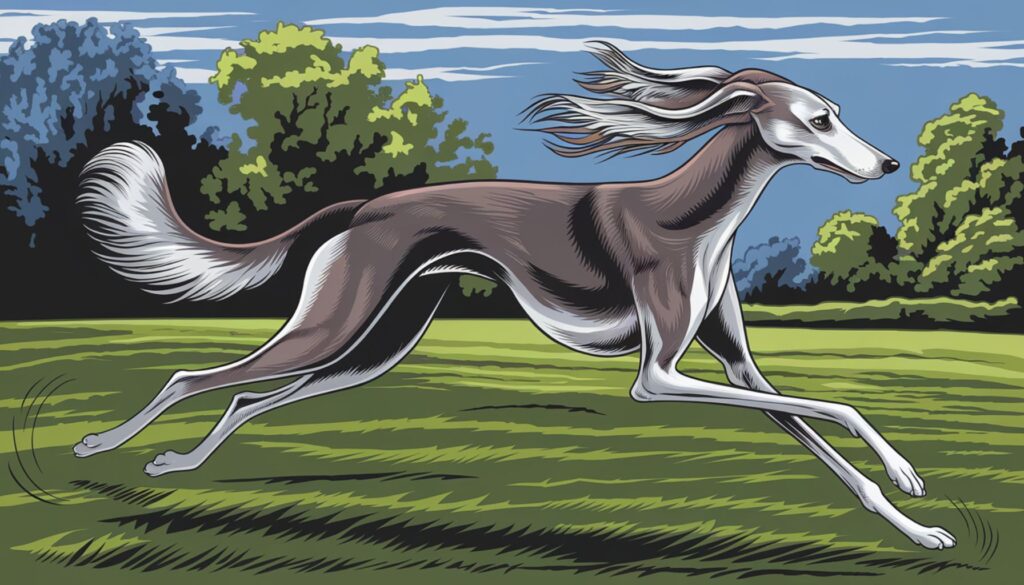
2. Saluki
Often called the Royal Dog of Egypt, Salukis are no slouches in the speed department. These elegant pups can reach speeds up to 43 mph. With their long, silky ears flowing in the wind, Salukis look like they’re straight out of a doggy shampoo commercial as they zoom by.
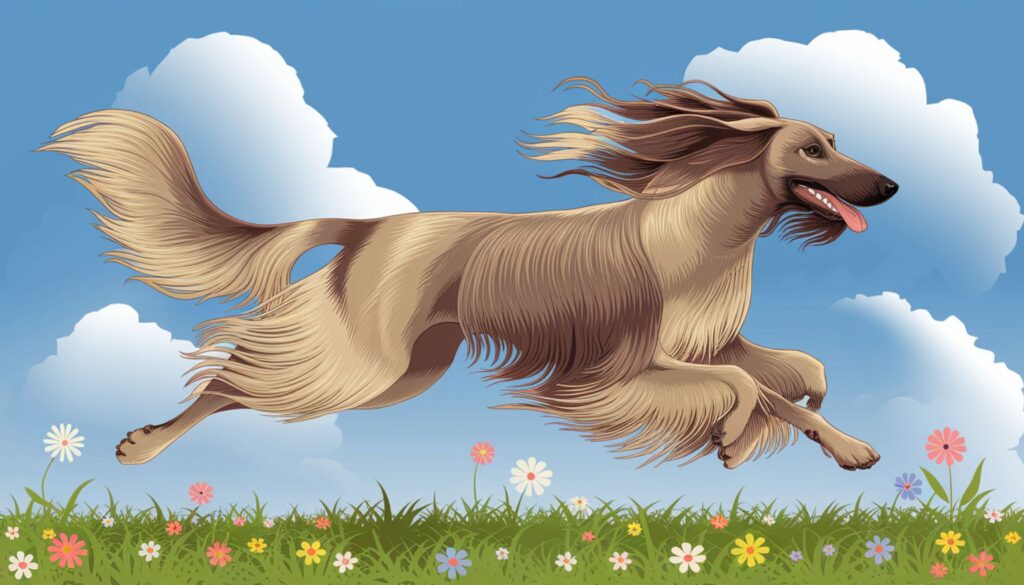
3. Afghan Hound
Don’t let the glamorous coat fool you – Afghan Hounds are serious speedsters. Clocking in at around 40 mph, these dogs were originally bred to hunt in the mountains of Afghanistan. They’re like the supermodels of the dog world – gorgeous and surprisingly athletic.
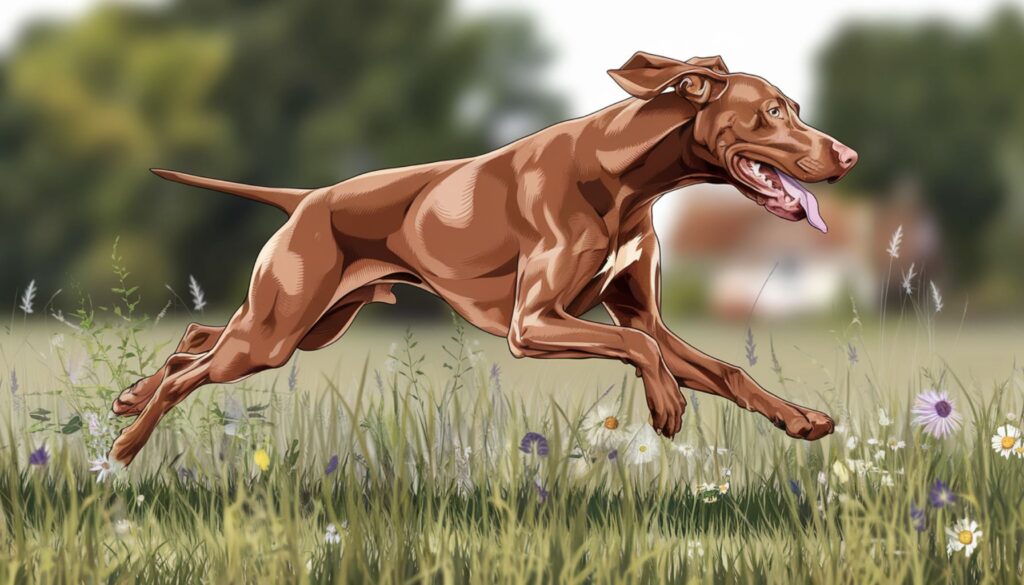
4. Vizsla
Hungarian Vizslas are versatile hunters and all-around athletes. They can sprint up to 40 mph and have the stamina to keep going for hours. Think of them as the decathletes of the dog world – fast, agile, and always ready for action.
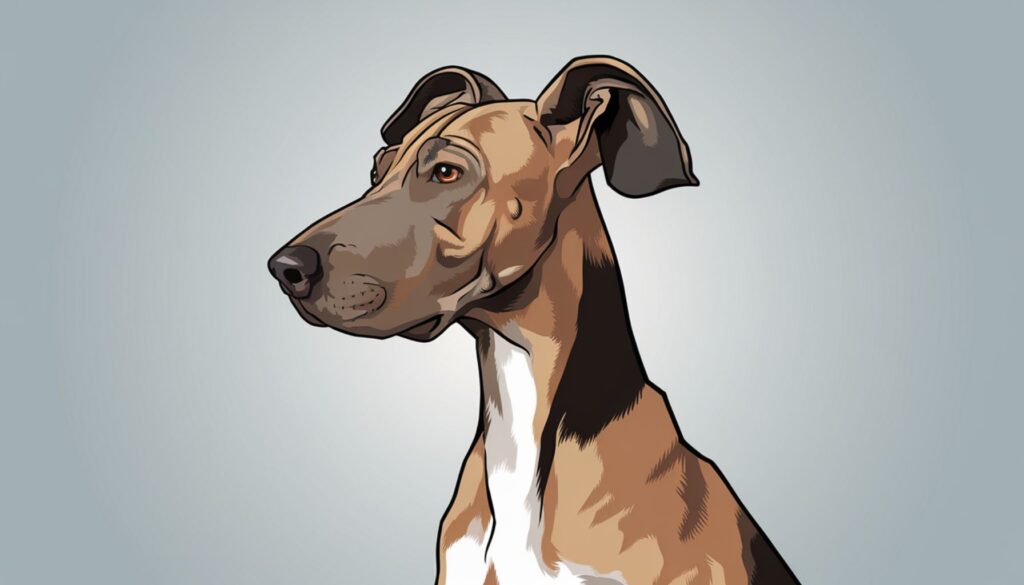
5. Ibizan Hound
With their distinctive large, upright ears, Ibizan Hounds look like they could take flight at any moment. While they can’t fly, they can run at speeds up to 40 mph. Originally bred to hunt rabbits in the rocky terrain of Ibiza, these dogs are agile and quick on their feet.
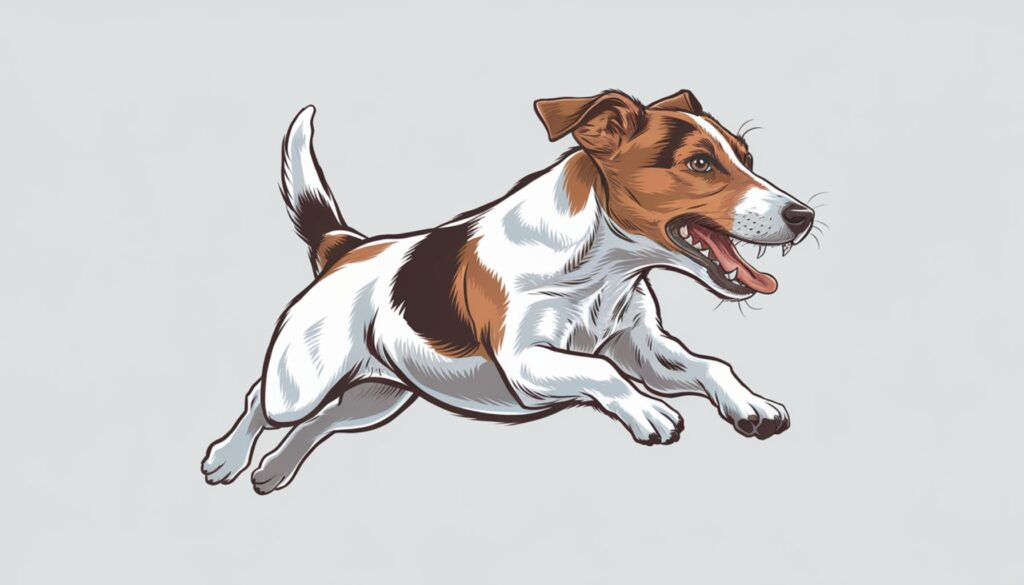
6. Jack Russell Terrier
Surprise! This little pocket rocket can reach speeds of up to 38 mph. What Jack Russell Terriers lack in size, they make up for in speed and determination. They’re like the scrappy underdogs of the racing world – small but mighty.
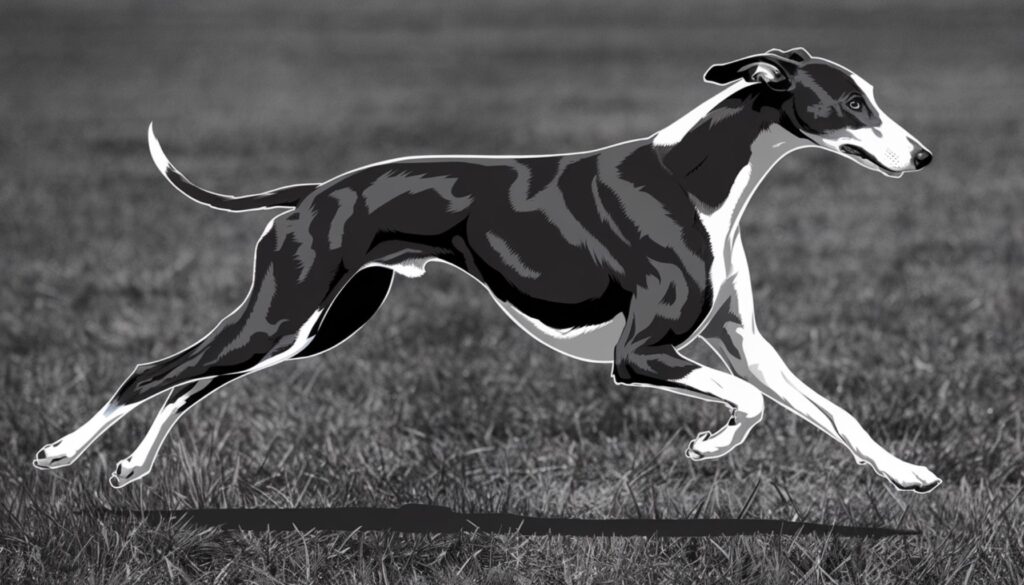
7. Whippet
Often called “the poor man’s racehorse,” Whippets can hit speeds of up to 35 mph. These medium-sized sighthounds share many physical traits with their larger Greyhound cousins. They’re like the sports car version of the Greyhound – smaller, but still impressively fast.
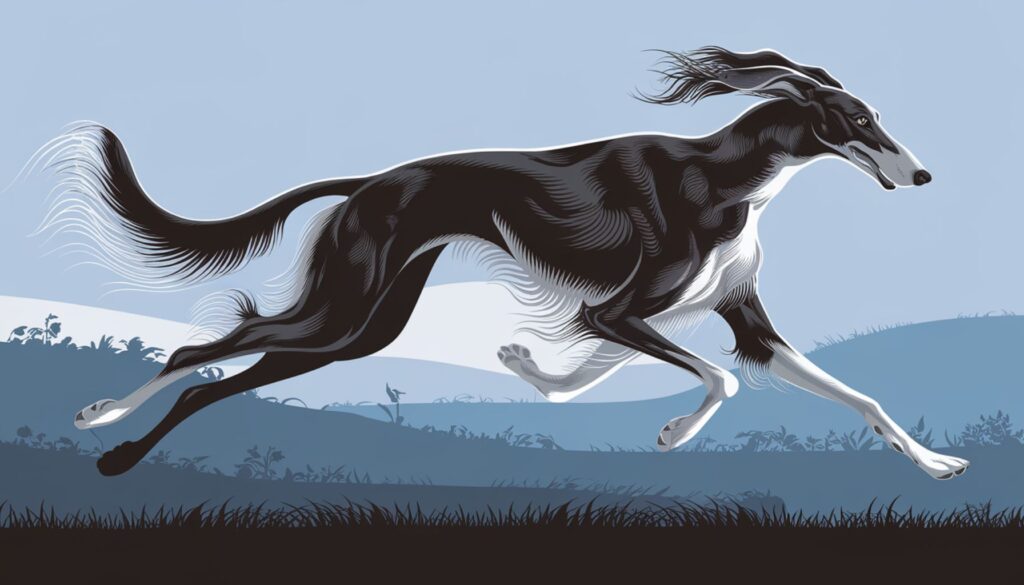
8. Borzoi
Also known as Russian Wolfhounds, Borzois can reach speeds of 35 mph. With their long, silky coats, they look like they’re floating as they run. These elegant giants were bred to hunt wolves in the Russian countryside, combining speed with strength.
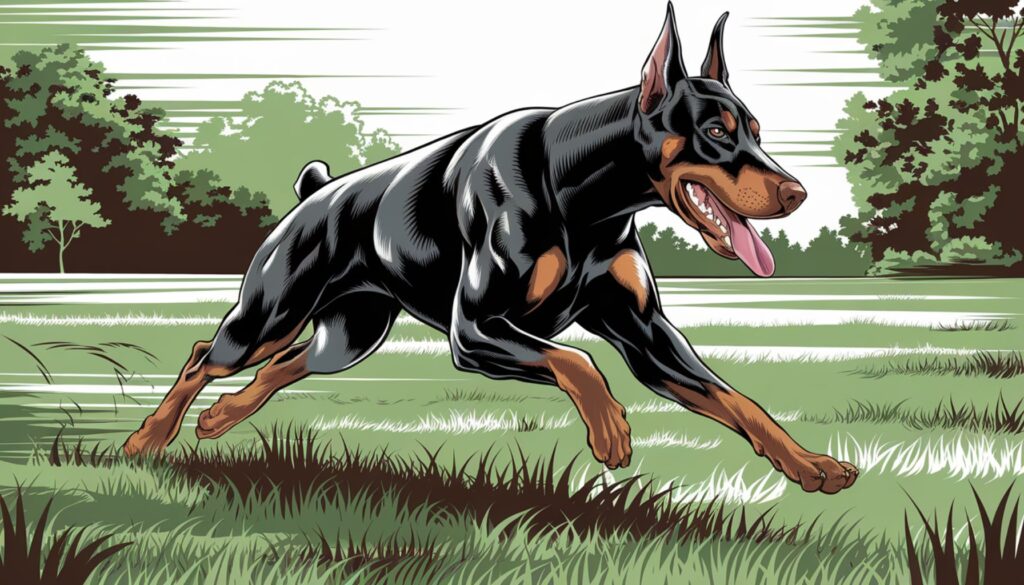
9. Doberman Pinscher
Dobermans aren’t just guard dogs – they’re speedy athletes that can run up to 32 mph. Their muscular build and intense focus make them formidable sprinters. Think of them as the bodybuilders of the dog racing world – strong, fast, and intimidating.
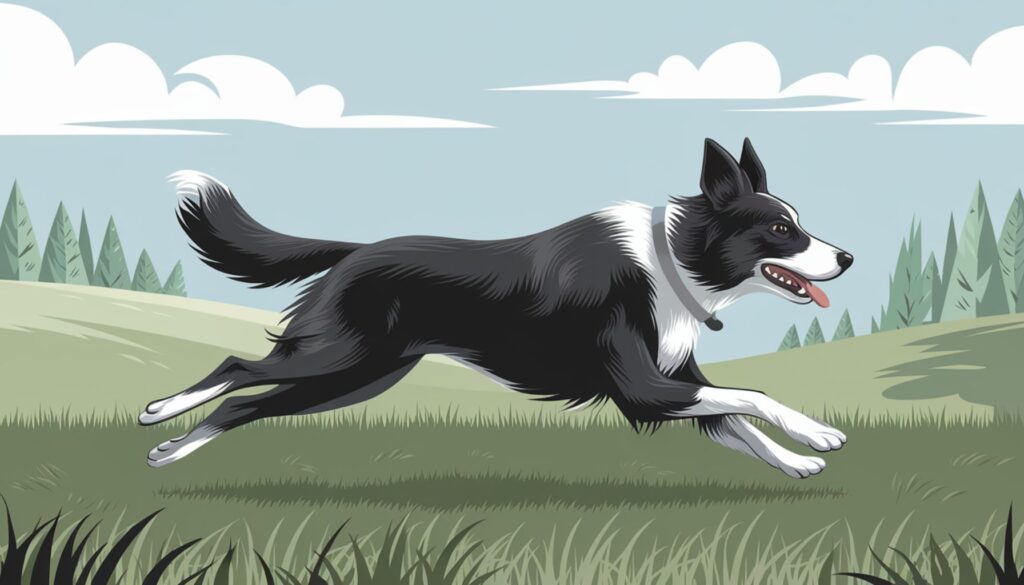
10. Border Collie
Rounding out our top 10 is the Border Collie, reaching speeds of up to 30 mph. These intelligent herding dogs combine speed with agility and endurance. They’re like the Swiss Army knives of the dog world – versatile, smart, and surprisingly quick.
| Breed | Speed | Notes | Source |
|---|---|---|---|
| Greyhound | 45 mph (72 km/h) | Can accelerate to top speed in just 6 strides | [2] [6] |
| Siberian Husky | 10-15 mph (16-24 km/h) | Can maintain speed for over 100 miles in a day when pulling a sled | [1] |
| Jack Russell Terrier | 30 mph (48 km/h) | Impressive speed for its small size | [1] [4] |
| Average Domestic Dog | 18-31 mph (29-50 km/h) | General speed range for most breeds | [3] |
| Animal | Speed | Notes | Source |
|---|---|---|---|
| Greyhound | 45 mph (72 km/h) | Can complete a 100-meter dash in 5.33 seconds | [6] |
| Cheetah | 75 mph (120 km/h) | Can only maintain top speed for about 30 seconds | [5] [6] |
| Horse | 30 mph (48 km/h) | Can sustain this speed for longer distances | [5] [6] |
| Usain Bolt (Human) | 27.8 mph (44.7 km/h) | World record for 100-meter dash: 9.58 seconds | [6] |
Beyond the Racetrack: Living with Swift Canines
So, you’re thinking of bringing one of these speed demons into your life? Hold onto your hat (and your running shoes) – living with a fast dog breed is an adventure all its own.
First things first: these pups need to move. We’re talking about serious exercise requirements here. A quick walk around the block? That’s like asking Usain Bolt to compete in a three-legged race – it’s just not going to cut it.
Most of these swift breeds need at least an hour of vigorous exercise daily. That could mean:
- Long runs (hope you’re in shape!)
- Fetch sessions that’ll have your arm feeling like you’ve pitched a baseball game
- Agility courses that’ll make your backyard look like a doggy Olympics
But here’s the twist – many of these speed demons are surprisingly chill at home. Take Greyhounds, for example. They’re often called “40-mph couch potatoes” because once they’ve had their run, they’re happy to lounge around like furry throw pillows.
However, don’t be fooled by their lazy act. These dogs have a prey drive that can kick in at any moment. One minute they’re snoozing on the sofa, the next they’re chasing after a squirrel like their life depends on it. Secure fencing is a must – unless you fancy impromptu neighborhood sprinting sessions.
Living with a fast dog also means being prepared for their unique quirks:
- Zoomies: Random bursts of energy that’ll have your dog racing around the house like they’re recreating the Indy 500.
- Impressive Leaps: Some of these breeds can jump surprisingly high. Your countertops are no longer safe.
- Catch Me If You Can: Teaching recall to a dog that can outrun you? It’s… an experience.
But it’s not all chaos and chasing. These breeds often make loving, loyal companions. They’re smart, trainable (with patience), and many are good with kids – as long as the kids don’t mind a dog that might occasionally zoom past them like a furry bullet.
The Science of Canine Speed
Let’s get our nerd glasses on and dive into what makes these dogs the speed demons they are. It’s not just about having four legs and a wagging tail – there’s some serious biology at play here.
First up, let’s talk muscles. Fast dogs have a higher proportion of fast-twitch muscle fibers. These fibers contract quickly and powerfully, perfect for sprinting. It’s like they’ve got natural nitro boosters built into their legs.
But muscles are just part of the equation. The real magic happens in the overall body structure:
- Flexible Spine: Acts like a coiled spring, extending the stride length.
- Long Legs: More ground covered with each stride.
- Unique Foot Structure: Many fast breeds have what’s called a “double-suspension gallop.” All four feet are off the ground twice in each stride cycle. It’s like they’re flying!
- Large Heart and Lungs: More oxygen to those hard-working muscles.
- Slim, Aerodynamic Build: Less air resistance means more speed.
Now, let’s put this into perspective. A Greyhound running at top speed takes about 4 strides per second, with each stride covering up to 20 feet. That’s like you taking 20-foot steps. Good luck with that!
Comparing our canine speed demons to other animals is where things get really interesting:
- Greyhounds can outpace racehorses over short distances.
- While a cheetah can hit 70 mph, it can only maintain that speed for about 30 seconds. Some of our fast dog breeds can keep up their pace for much longer.
- In a 100-meter dash, a top Greyhound would leave Usain Bolt eating dust (or in this case, kibble).
But speed isn’t everything. Many of these breeds combine their velocity with incredible agility and endurance. It’s like having a sports car that can also off-road and compete in Le Mans.
The science behind canine speed is a testament to the amazing adaptability of dogs. Through evolution and selective breeding, we’ve created breeds that can run faster than we ever could. It’s a reminder of the incredible diversity in the dog world and the special bond between humans and their canine companions.
| Subject | Speed | Notes | Source |
|---|---|---|---|
| Average Dog | 15-20 mph | General speed range for most breeds | [1] |
| Greyhound | 45 mph | Can reach top speed in 6 strides, covering about 20 feet per stride | [2] |
| Saluki | 42-43 mph | Can maintain speed for up to 800 meters | [3] |
| Jack Russell Terrier | 38 mph | Fast despite small size | [4] |
| Alaskan Malamute | 10-15 mph | Can maintain pace for hours, covering up to 100 miles in a day | [5] |
| Average Human | 8 mph | For comparison | [6] |
| Elite Human Sprinter | 28 mph | Top speed for comparison | [6] |
| Greyhound (Racing) | 40 mph | Average speed during a 5/16-mile race, completed in about 31 seconds | [7] |
From Ancient Hunters to Modern Companions
Our speedy canine friends didn’t just wake up one day and decide to be fast. Their swiftness is the result of thousands of years of evolution and human intervention. Let’s take a trip down memory lane and see how these speed demons came to be.
Many of our fastest dog breeds have their roots in ancient hunting traditions:
- Salukis: These elegant speedsters have been around for so long that they’re featured in Egyptian tombs dating back to 2100 BCE. They were the royal dogs of Egypt, used for hunting gazelles and hares in the desert.
- Greyhounds: Another ancient breed, Greyhounds were revered in Ancient Egypt, Greece, and Rome. They’ve been racing and hunting for millennia.
- Afghan Hounds: These glamorous pups were originally bred to hunt large prey in the mountainous regions of Afghanistan. Their speed and agility were crucial for navigating tough terrain.
As time went on, the roles of these swift dogs evolved:
- In medieval Europe, owning sighthounds (dogs that hunt by sight rather than scent) was often restricted to nobility. Talk about exclusive dog clubs!
- The 19th century saw the rise of organized dog racing, particularly with Greyhounds. Suddenly, speed wasn’t just about catching dinner – it was a sport.
- Some breeds, like the Vizsla, became versatile hunting companions, combining speed with other skills like pointing and retrieving.
Fast forward to today, and these breeds have found new roles:
- Many are beloved family pets, their speed now used for play rather than hunting.
- They excel in dog sports like agility, flyball, and lure coursing.
- Some, like Border Collies, use their speed in herding competitions.
But here’s the thing – while their jobs might have changed, their need for speed hasn’t. These dogs still have the instincts and physical capabilities of their ancestors. It’s why a Greyhound can go from couch potato to canine bullet in seconds, or why a Border Collie might try to herd your kids.
Understanding this history helps us appreciate these breeds even more. They’re not just fast dogs – they’re living artifacts, carrying the genes and instincts of dogs that have been running alongside humans for thousands of years.
Timeline of the World’s Fastest Dog Breeds
Ancient Egyptian Salukis
Earliest depictions of Salukis found in ancient Egyptian tombs, indicating their role in hunting.
Greyhounds in Ancient Egypt
Greyhounds revered in Egypt for their speed and elegance, used for hunting and coursing.
Borzoi Development
Borzoi breeds developed in Russia for hunting wolves.
Salukis in Europe
Salukis introduced to Europe, gaining popularity as both companion and racing dogs.
Formal Dog Racing Begins
The beginning of formal dog racing, leading to increased selective breeding for speed in Greyhounds.
First Official Greyhound Racing Tracks
The first official Greyhound racing tracks opened in the United States, further promoting the breed for sports.
Rise of Sighthound Popularity
Increased recognition and popularity of various sighthound breeds, including Salukis and Whippets.
Caring for Your Canine Speedster
So, you’ve decided to welcome one of these four-legged speed demons into your life. Buckle up, buttercup – you’re in for a wild ride! Caring for a fast dog breed isn’t just about keeping up with them physically (though good luck with that). It’s about understanding their unique needs and quirks.
First things first: Exercise, exercise, exercise. Did I mention exercise? These dogs need to run. It’s not just about physical health – it’s mental wellbeing too. A bored fast dog is a recipe for disaster (and possibly some redecorated furniture).
But it’s not all about running. Here are some key points to keep in mind:
- Mental Stimulation: These dogs are often as smart as they are fast. Puzzle toys, training sessions, and interactive games are crucial.
- Safe Spaces to Run: A fenced yard is ideal, but not always possible. Look for secure dog parks or consider lure coursing for a safe outlet for their speed.
- Proper Diet: High-energy dogs need high-quality fuel. Consult with your vet about the best diet for your speedy friend.
- Regular Check-ups: Fast dogs can be prone to certain health issues, like joint problems or heat exhaustion. Regular vet visits are a must.
- Training: Start early and be consistent. Remember, these dogs can outrun you, so a solid recall is crucial.
- Socialization: Many fast breeds have a strong prey drive. Early socialization can help them learn to play nice with other pets.
- Comfortable Resting Spots: After all that running, your speed demon will need a comfy place to crash. Orthopedic beds can be great for breeds prone to joint issues.
Now, let’s talk about some breed-specific considerations:
- Sighthounds (like Greyhounds, Whippets, Salukis): These breeds often have very thin skin and low body fat. They might need coats in cold weather and extra-soft bedding.
- Double-coated Breeds (like Border Collies): Regular brushing is crucial, especially during shedding season.
- Short-haired Breeds (like Vizslas): They might need sunscreen in the summer. Yes, dog sunscreen is a thing!
Remember, owning a fast dog breed is a commitment. They’re not just weekend warriors – they need consistent exercise and mental stimulation every day. But for the right owner, these speed demons make incredible companions. They’ll keep you active, make you laugh, and maybe even inspire you to pick up the pace in your own life.
Product Recommendations
Living with a canine speed demon? You’ll need the right gear to keep up! Whether you’re looking to channel that energy or just keep your swift pup safe and happy, these products can help you manage life in the fast lane with your four-legged friend.
- Hands-Free Running Leash: Perfect for jogging with your speedy companion without losing your balance.
- Interactive Flirt Pole: Great for high-energy play sessions in a smaller space.
- Automatic Ball Launcher: For those days when your throwing arm just can’t keep up.
- GPS Collar: Because sometimes even the best recall training isn’t enough for a determined speedster.
- Puzzle Feeder: Slows down mealtime and provides mental stimulation.
- Cooling Vest: Helps prevent overheating during intense exercise sessions.
- Orthopedic Dog Bed: Gives your speed demon a comfy place to rest those hard-working joints after a day of running.
These products aren’t just gadgets – they’re tools to help you provide the best care for your high-speed hound. From safety to stimulation, they address the unique needs of fast dog breeds. Remember, the goal isn’t just to tire out your pup, but to engage them mentally and physically in a way that’s safe and fun for both of you.
Further Reading
Want to dive deeper into the world of canine speed demons? These articles will help you expand your knowledge and better understand these swift breeds:
- 10 Smartest Dog Breeds: Many fast breeds are also incredibly intelligent. Discover how mental agility often goes hand-in-hand with physical speed.
- 7 Active Dog Breeds: Explore other high-energy breeds that might not make the top-speed list but still need plenty of exercise.
- Dog Training Techniques: Training a fast dog requires special techniques. Learn how to keep your speedy pup focused and responsive.
- Dog Nutrition and Diet: Fueling a canine athlete requires the right nutrition. Understand how to keep your fast dog healthy from the inside out.
- 9 Family-Friendly Dog Breeds: Discover which speedy breeds also make great family pets, combining their need for speed with a love for human companionship.
These articles provide valuable insights into various aspects of caring for fast dog breeds. From training to nutrition, understanding these topics will help you provide the best life for your swift companion. Remember, knowledge is power when it comes to pet care, especially for these high-energy pups!
Frequently Asked Questions About the Fastest Dog Breeds
Q: Can fast dog breeds live in apartments?
A: While it’s possible, it requires dedication. Many fast breeds, like Greyhounds, can adapt to apartment living if given adequate exercise. However, you’ll need to commit to daily outings and find safe spaces for them to run. Smaller fast breeds like Whippets might be better suited for apartment life.
Q: Are fast dog breeds good with children?
A: It depends on the breed and individual dog. Many fast breeds, like Vizslas and Whippets, can be great with kids when properly socialized. However, their high energy and strong prey drive mean supervision is crucial. Always teach children how to interact safely with dogs, especially high-energy ones.
Q: How much exercise do fast dog breeds need?
A: Most fast breeds need at least an hour of vigorous exercise daily. This can include running, playing fetch, or participating in dog sports. Mental stimulation through training and puzzle toys is also important. Remember, a tired dog is a good dog!
Q: Are fast dogs harder to train?
A: Not necessarily, but they can present unique challenges. Many fast breeds are intelligent and eager to please, which can make training easier. However, their high energy and strong prey drive can make focus challenging. Consistent, positive reinforcement training methods work best.
Q: Do all fast dog breeds have a high prey drive?
A: While many fast breeds were originally bred for hunting and have a strong prey drive, it varies by individual. Proper training and early socialization can help manage prey drive. Some breeds, like Border Collies, may have more of a herding instinct than a prey drive.
Fastest Dog Breeds Quiz
Final Thoughts
From the lightning-fast Greyhound to the surprisingly speedy Jack Russell Terrier, the world of fast dog breeds is as diverse as it is fascinating. These canine speed demons aren't just impressive athletes – they're loyal companions, each with their own unique personality and needs.
Owning a fast dog breed is both a joy and a responsibility. It means committing to providing plenty of exercise, mental stimulation, and understanding their specific traits. But for those up to the challenge, the rewards are immeasurable. There's something truly special about watching these dogs do what they were born to do – run like the wind.
Whether you're considering adding one of these swift pups to your family or just admiring their incredible abilities, remember that every dog, fast or slow, deserves love, care, and respect.
At Woof Wag Nation, we believe in celebrating the unique qualities of all dogs while providing owners with the knowledge they need to give their pets the best life possible.
Share Your Speedy Stories
Have you had the pleasure (or adventure) of living with one of these canine speed demons?
We'd love to hear about it!
Share your stories, tips, or questions about fast dog breeds.
Your experiences could help other dog lovers understand these amazing animals better.
And, who knows?
Maybe your tale of backyard zoomies or park chase scenes will inspire someone else to welcome a swift companion into their life.
So, go ahead, let's get the conversation running – at top speed, of course!

About the Author: Cal Hewitt
Cal Hewitt is a seasoned content creator specializing in dog training and grooming. With years of experience writing for top dog service sites and a deep understanding of the challenges pet owners face, Cal delivers practical, research-backed advice to help you build a better relationship with your furry friend. From behavior tips to grooming guides, his articles aim to provide real solutions to common problems. Want to learn more about Cal and his approach to helping dog owners? Check out his full bio below.

